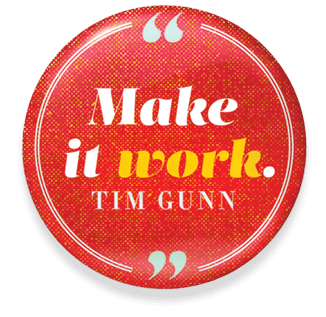- May 06, 2016
- By Maryland Today Staff
Defeats, errors, botches, bungles and busts—call them whatever you want, but everyone has experienced failure at one point or another.
The UMD community is no different, as the road to each big breakthrough is paved with a pothole or two. What defines a Terp, though, is not letting a flat tire end the journey.
Whether in the classroom, the lab or an off-campus venture, UMD faculty have met missteps head-on and found success through failure. Read about just a few of them:
Back for the Future
Information studies Associate Professor Timothy Summers should have been on top of the world. At just 25, he had a high-paying job telling Department of Defense officials how to shore up their computer systems against cyberattacks. Personally, he was in the best shape of his life, running up to 21 miles on the weekends.
Then he tore two discs in his back, leaving one leg partially paralyzed, and both of his parents fell ill. He became withdrawn and antisocial, yet in his darkest moment, he realized he could redefine success by pursuing his childhood love of hacking. That is, the good kind that involves taking things apart and repairing them to understand how they work.
“Hackers think of failure as just opportunity for revision,” he says—and that’s what Summers did with his life.
Reinvigorated, he developed a unique theory on hacker psychology, became an internationally renowned consultant and landed “an amazing job” teaching students about innovation and entrepreneurship.
Deep Mistake
With time ticking down to launch and two different lab tests indicating the telescope for NASA’s Deep Impact spacecraft was in focus, the instrument’s manufacturer and the UMD professor heading the mission decided to disregard contradictory info from a pesky theoretical model.
Big mistake.
Photos from the craft, which was about to send an “impactor” into a comet millions of miles away, were severely blurry because researchers had failed to take into account warping of a mirror by the lab tests’ super-cold temperatures.
“The only thing we could do was figure out how to fix the camera while it was in space,” says principal investigator Michael A’Hearn, a distinguished university professor emeritus of astronomy.
Eventually they realized they could use a mathematical process to reconstruct the images to look properly focused.
In the end, the public and scientific community got clear images of Deep Impact blasting some of Comet Tempel 1’s interior into space on July 4, 2005, and the mission helped advance image processing science.
Words to Live By
Bruce Auster, a journalism lecturer, was a young reporter who’d put in a couple years of grunt work at U.S. News & World Report when he landed his own beat: the Pentagon. The problem was, his stories were so heavily edited week after week that he barely recognized the words under his byline.
“It’s demoralizing. And this kept happening,” says Auster. “In my mind this was a sort of fundamental failure because your whole sense of yourself is built around this thing you think you’re good at.”
He finally mustered the courage to approach his editor to ask what he’d been doing wrong. “That’s all the editor needed. He didn’t have time to babysit me, but as soon as he knew that I cared, he would show me what he was doing and why and help me understand it.”
Today, the NPR senior editor encourages his students to embrace failure as a necessary step to success. “The best thing you can do is work for people who are better than you.”
Little Big Time
Today, PearsonWidrig DanceTheater company tours from Austria to New Zealand and has been written up in The New York Times and Dance Magazine. But in its early years, dance associate professors Sara Pearson and Patrik Widrig accidentally lost a valuable opportunity for exposure it desperately needed.
 In 1989, the company performed an aerial dance at a Lincoln Center festival, caught the eye of PBS and was asked to perform for the public broadcast service. But after seeing the studio, the duo asked for a bigger space—a request that cost them the gig.
In 1989, the company performed an aerial dance at a Lincoln Center festival, caught the eye of PBS and was asked to perform for the public broadcast service. But after seeing the studio, the duo asked for a bigger space—a request that cost them the gig.
“I was so naïve at the time, but the answer should have been, ‘Yes, we can rework it!’” Pearson says.
